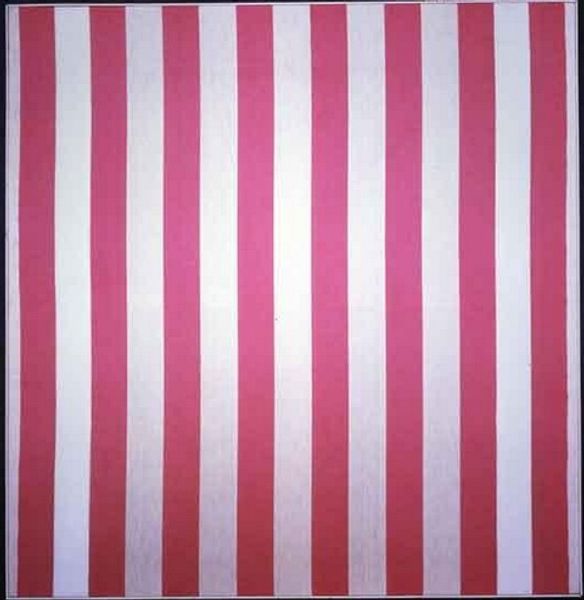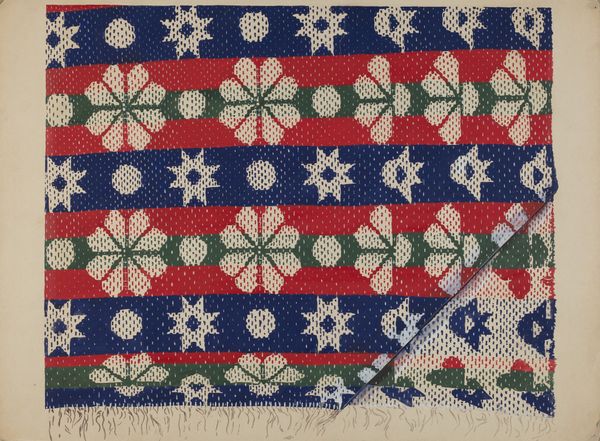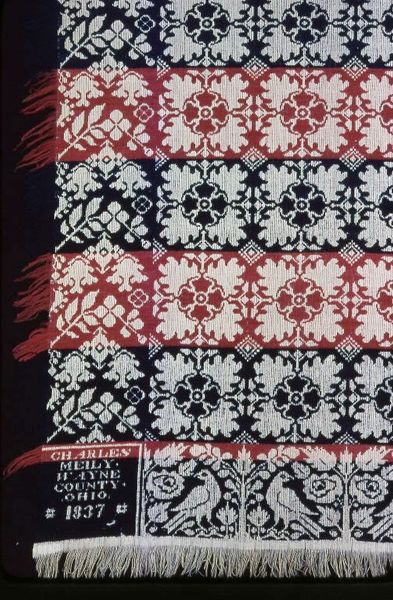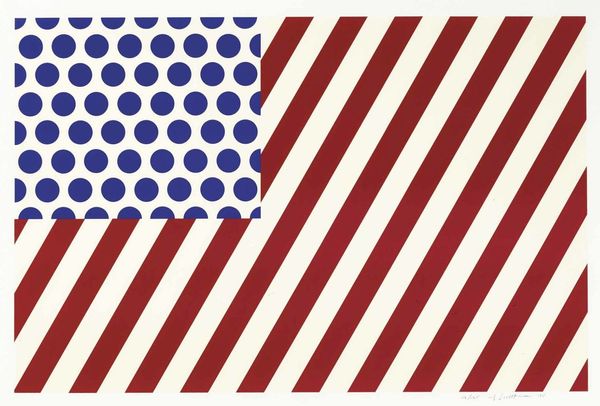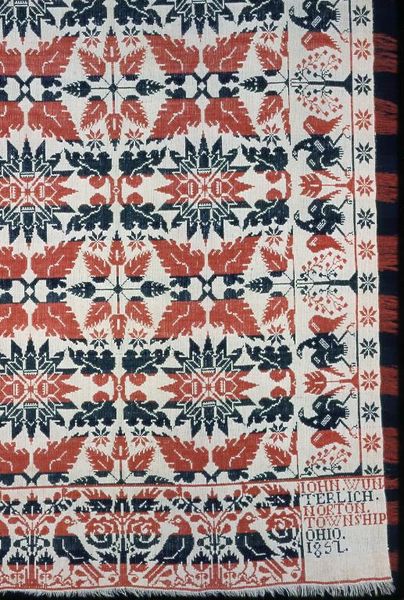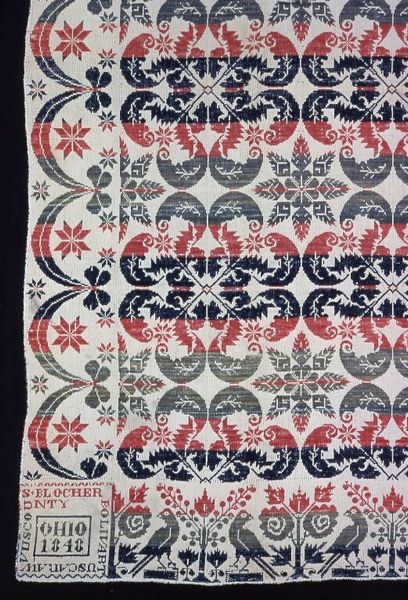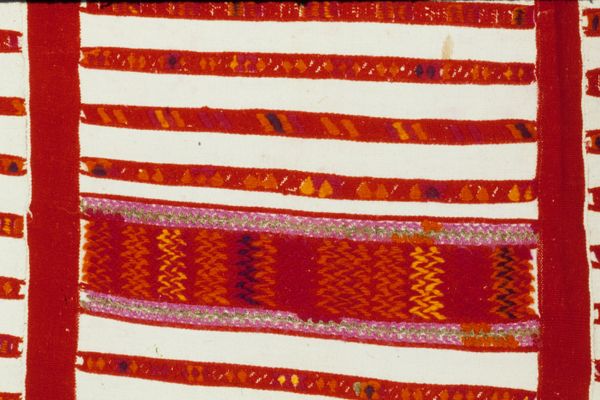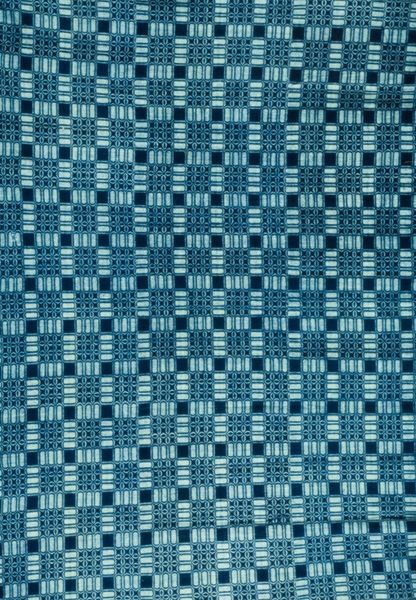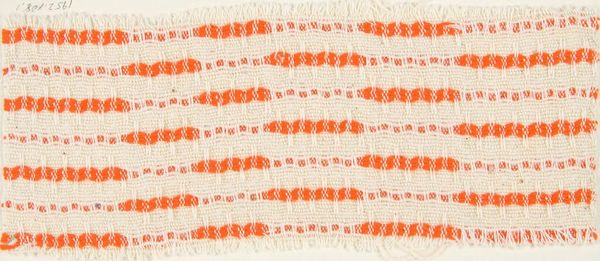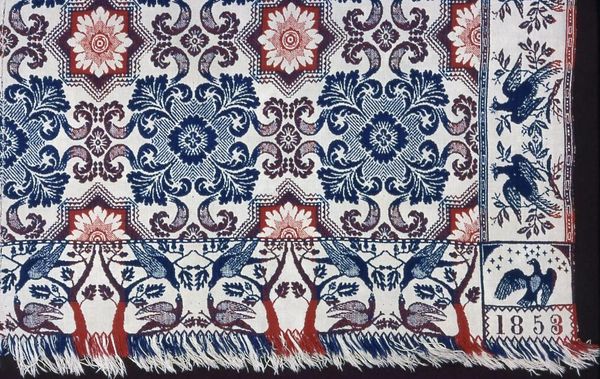
mixed-media, weaving, textile, pen
#
mixed-media
#
pattern
#
weaving
#
textile
#
folk-art
#
geometric
#
pen
Dimensions: 262.6 × 203.4 cm (103 1/2 × 80 1/8 in.) Repeat: 12.1 × 6.8 cm (4 3/4 × 2 5/8 in.)
Copyright: Public Domain
Isaac Brubaker wove this coverlet in 1838, and it strikes us immediately with its methodical arrangement and interplay of color. The piece presents alternating rows of red and blue squares, each containing a white, stylized floral motif. The pattern repeats with a precision that speaks to the mechanization of textile production during the 19th century. But let's delve deeper into how this formal structure informs meaning. The grid, a structure explored by Rosalind Krauss, dominates the visual field. It's a symbolic framework that flattens perspective and emphasizes surface over depth. This hints at the shift in artistic focus from illusionistic representation to an emphasis on the material qualities of the medium itself. The coverlet thus engages with broader artistic and philosophical concerns. It challenges the traditional hierarchy between craft and fine art, suggesting new ways of valuing the aesthetic qualities of functional objects. This piece invites us to consider the semiotic system within the domestic space, and how repeated motifs can construct a visual language that reflects cultural values. As such, the coverlet functions not merely as a textile, but as a complex cultural artifact open to ongoing interpretation.
Comments
No comments
Be the first to comment and join the conversation on the ultimate creative platform.
